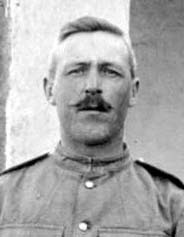My thanks to Ian Hilder for sending me this photo of The Ancient Order of Foresters plaque in St Mary's Church, Barcombe, Sussex.
J C Miller is a familiar name to me and I outline his life below. But first, the roll call as remembered by the Foresters:
G/2228 Pte
William Henry Banks, 8th Royal Sussex Regt, KiA 7th February 1916
J E Clark118775 Gnr
Fred Day, RGA, KiA 25th April 1918
48051 Pte
Frederick Edwards, 21st Northumberland Fusiliers, KiA 9th September 1917
G/798 L/Cpl
George Fred Foord, 7th Royal Sussex Regt, DoW 19th July 1916
E King90669 Gnr
Joseph Charles Miller, RGA, DoW 29th September 1917
SD/538 Pte
Cecil Hugh Peckham, 11th Royal Sussex Regt, DoW 19th March 1916
G/8556 Pte
Charles William Peckham, 7th Royal Sussex Regt, DoW 11th July 1918
40397 Pte
Frederick Stephen Saunders, 2nd Middlesex Regt, KiA 17th November 1916
L/8159 Cpl
Herbert Leslie Stevens, 2nd Royal Sussex Regt, KiA 30th October 1914
53650 Gnr
Leonard Howard Stevens, RGA, KiA 27th July 1917
F ScraseAt the Going Down of the sun, and in the morning, WE WILL REMEMBER THEM.F Scrase is possibly 6398896 Pte Frederick Henry John Scrase of the 1st Battalion Royal Sussex Regiment who died on the 24th November 1941 in North Africa. I have yet to identify E King and J E Clark. The two Peckham boys were the brothers of John Peckham who is counted amongst Chailey's men. Joseph Miller, alone of the Foresters, is recorded on the Chailey War Memorial.
Joseph Charles MillerJoseph was born in Lewes, Sussex in 1886. He appears on the 1901 census of England and Wales as a fifteen year old living at Anchor Cottage, Barcombe with his family. The family comprised 53 year old Benjamin Miller (a miller’s carter), his 52 year old wife Harriet (a caretaker) and three sons: William Richard Miller (aged 21; a miller’s carter), Joseph Charles Miller (a carter’s apprentice) and Edgar Stanley Miller (a 12 year old scholar).
There were other children too. Albert Miller, born in Mayfield, appears on the 1891 census as a sixteen year old gardener while Edward Alfred Miller (aged nine) and Alice Jane Miller (aged seven) were scholars. Albert had the middle initial J although this only appears on the 1881 census. By the time the 1901 census was taken, he was living in Mayfield with a young family of his own (and coincidentally living next door to another Albert Miller) and Alice Miller was working as a housemaid at Little Buckingham Farm, Old Shoreham. I can find no trace of Edward.
On the 1881 census there is also another sibling: Elizabeth R Miller, aged three. This is Elizabeth Rosa Miller whose birth was registered at Lewes (the town of her birth) in the June quarter of 1877.
At the time of his enlistment, Joseph Miller was living at Wivelsfield, Sussex and enlisted at Hayward’s Heath. Chailey Parish Magazine first mentions him in July 1916, recording his details as Miller, Gnr J C, RGA, England. In January 1918 it noted that he was “missing” but it was not until July 1918 that he appeared in the parish magazine’s roll of honour. The entry reads: Gnr J C Miller, RGA, killed in action, Sept 18th 1917 in France.
In fact, Joseph Miller had died of wounds on 29th September 1917, a fact recorded by both Soldiers Died In The Great War and The Commonwealth War Graves’ Commission although the latter incorrectly records his name on its roll of honour register as “John C Miller”.
Joseph Miller was 90669 Gunner Miller, serving with 210th Siege Battery, Royal Garrison Artillery at the time of his death. He is commemorated on Chailey’s war memorial and is buried at Buffs Road Cemetery, Ypres. His grave stone records his initials, J C, rather than his Christian names.
Three of Joseph’s brothers – William, Edgar and Albert – also served their King and Country during the First World War.
















.jpg)



